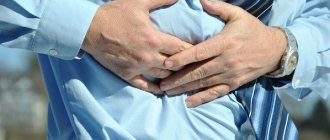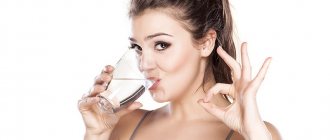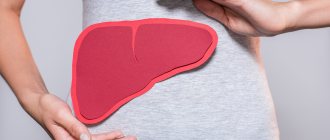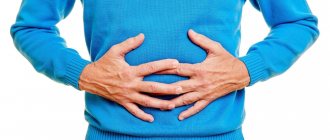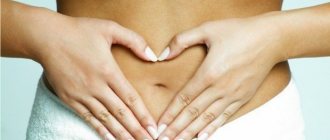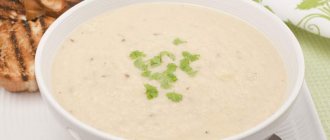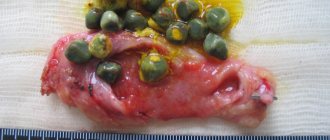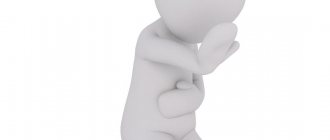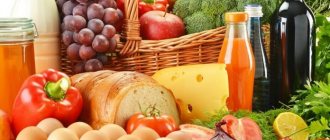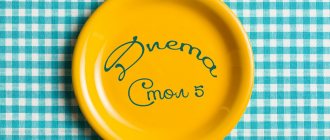Cooking and eating
Dishes are prepared boiled, baked, food is salted normally. The food should be warm. Diet: at least 4 times a day, preferably 5-6 times.
Allowed
Bread: day-old or dried wheat, rye and other types of bread, shortbread cookies
Soups: various soups from vegetables, cereals, pasta with vegetable broth or milk, fruit soups Meat and poultry dishes: products from lean beef, poultry, boiled or baked after boiling, in pieces or chopped. Milk sausages
Fish dishes: various low-fat varieties of fish (cod, pike perch, navaga, pike, carp, silver hake) boiled or steamed
Vegetables: various types of vegetables and herbs, sour sauerkraut, canned green peas, ripe tomatoes
Dishes made from flour, cereals, legumes and pasta: crumbly semi-viscous porridges, puddings, casseroles, dishes made from oatmeal and buckwheat porridge are especially recommended
Eggs: no more than one per day, added to dishes, egg white omelet
Fruits, berries, sweet dishes: various fruits and berries except very sour ones, canned fruits, compotes, jelly, lemon (with tea), sugar, jam, honey
Milk, dairy products: milk with tea, condensed, dry, low-fat cottage cheese, small amounts of sour cream, mild cheeses (Dutch, etc.). Cottage cheese and cottage cheese products are especially recommended Fats: butter, vegetable oil (up to 50 g per day)
Appetizers: soaked herring, pressed caviar, salads and vinaigrettes, jellied fish
Drinks: tea and weak coffee with milk, non-acidic fruit and berry juices, tomato juice, rose hip decoction
Must be excluded
All alcoholic drinks, fresh baked goods, pastry products (cakes, pancakes, pancakes, fried pies, etc.), soups with meat, fish, mushroom broths, fatty varieties of beef, lamb, pork, goose, duck, fatty varieties of fish (stellate sturgeon, sturgeon, beluga, catfish), mushrooms, spinach, sorrel, radish, radish, green onions, pickled vegetables, canned food, smoked meats, caviar, ice cream, products with cream, chocolate, legumes, mustard, pepper, horseradish, black coffee, cocoa, cold drinks, cooking fats, lard, cranberries, sour fruits and berries, hard-boiled and fried eggs.
Download and print:
Diet No. 5
Make an appointment Do not self-medicate. Contact our specialists who will correctly diagnose and prescribe treatment.
Advice from nutritionists
To achieve sustainable and quick results, it is recommended to adhere to the following principles:
- All dishes should be at a comfortable temperature, have a neutral taste (spicy, sour, salty, smoked are excluded) and served chopped.
- The preferred methods of cooking are steaming, boiling and stewing.
- Compliance with drinking regime. The patient should drink 1.5 liters of water per day, excluding soups and other liquids.
- Fractional meals - up to six meals a day.
- Diet No. 5 implies long-term adherence - up to two years. Throughout the entire period, medical supervision is required to monitor the condition and make the necessary adjustments to the diet.
- Lean meats and fiber-rich vegetables must be thoroughly chopped.
pixabay.com/
Advantages and disadvantages
| pros | Minuses |
|
|
Indications
- 5A - for acute hepatitis / cholecystitis , exacerbation of hepatitis / cholecystitis , liver cirrhosis in the compensation stage.
- 5B - exacerbation of chronic hepatitis / cholecystitis , with cirrhosis of the liver with moderate insufficiency, combined peptic ulcer / gastritis with hepatitis or cholecystitis .
- Diet No. 5 - for chronic liver/gallbladder diseases (beyond the acute stage).
- 5P - when cholecystitis with pancreatitis .
- 5F / 5 L/F - after cholecystectomy / hypotension of the gallbladder with bile stagnation.
Reviews and results
Therapeutic nutrition for diseases of the gallbladder and liver is the main component of therapy, allowing you to maintain the organs of the hepabilliary tract in a satisfactory condition, slow down the progression of the process and normalize the functions of the liver/gallbladder.
- “... After suffering from hepatitis, a year later I was diagnosed with fatty liver hepatosis. They said that it was necessary to switch to dietary nutrition and prescribed hepatoprotective drugs. I was on a strict diet for 3 months, and then began to gradually expand my diet. During this period, my general health improved significantly, my tests came back almost to normal. During the period of following the diet, I lost 4 kg, in principle, the diet does not bother me, I think that I will periodically switch to it”;
- “... I suffered from cholelithiasis for almost 10 years. But then the colic became more frequent, became unbearable, and an ultrasound revealed gallstones measuring 1.5 cm in size. Laparoscopic surgery was suggested. The operation was successful and a diet was prescribed. After 5 months, the condition more or less returned to normal, and I began to gradually expand my diet. At the same time, I noticed that with serious violations in nutrition (I drink a little, overeat, eat fatty foods, complications begin). This means that you cannot stray far from the principles of dietary nutrition and the set of recommended products”;
- “...I had viral hepatitis. I followed the diet strictly, especially in the first month, and then, as my general condition improved, I began to make mistakes in eating and this immediately made itself felt - heaviness appeared under the rib. I had to go back to diet food again, and decided to complete the treatment and stay on a diet, as the doctor recommended, for at least 6 months.”
Diet for gallstone disease
Doctors often revise dietary recommendations, guided by the latest discoveries of scientists. And now, it seems, it’s the turn to change the diet for gallstone disease.
If you have ever been interested in what kind of nutrition is suitable for the treatment of a given disease, then you are probably very familiar with Pevzner’s dietary table No. 5. In general, dietary tables are the most common domestic system of nutritional prescriptions for various diseases today. In particular, the goal of diet No. 5 is to normalize the functioning of the liver, biliary system, fat metabolism, as well as a general gentle attitude towards the digestive system. The fifth diet is easy to find on the Internet if you wish, but we will move on.
You might be surprised, but dietary tables were developed back in the middle of the last century. Since then, world medicine has greatly advanced in its understanding of the nature of diseases. Therefore, in the article I decided to collect modern facts about the effect of nutrition on gallstone disease, which I was able to find in English-language medical scientific journals. Some of these facts are already used in American, European and Australian nutrition manuals, while others still require additional research.
Food allergies
Back in the forties, doctors suggested that food allergies could be the cause of gallbladder disease. This was shown in experiments on various animals: rhesus monkeys, rabbits, etc. One study showed how a diet in which all allergenic foods were excluded from the diet reduced the symptoms of gallstone disease in 100% of subjects in a group of 96 people who have this disease. Unfortunately, such few observations do not allow us to draw global conclusions. However, some practitioners write that they use an individual hypoallergenic diet to treat the symptoms of gallstone disease.
Cholesterol and saturated fat
It is known that cholesterol plays an important role in the process of stone formation—it is what the bulk of the stone consists of. But the link between the disease and a diet rich in saturated fat is still questionable. There are epidemiological data that indicate this: the abundance of cholesterol in the diet of the population is associated with a greater manifestation of symptoms of the disease. At the same time, a diet rich in unsaturated fatty acids (fish oil, oils, nuts, etc.) is associated with a reduced risk of disease. There are not enough observations to draw definitive conclusions about whether additional consumption of unsaturated fats helps in the treatment of gallstone disease.
I found only one study that showed how taking fish oil as a supplement reduced cholesterol in bile by 25% in a group of subjects. This connection requires additional study, but medical practitioners are again ahead of scientists and are already using this principle when preparing the diet of patients.
Vegetarian diet
A 20-year study of 80,898 women found that consuming plant-based protein sources significantly reduced the risk of gallstones. The same connections were found with the active consumption of vegetables and fruits, which is typical for a vegetarian diet. By the way, dietary table No. 5 according to Pevzner also places emphasis on a fiber-rich diet, although the diet is not vegetarian. Fiber has a beneficial effect not on the gallbladder itself, but on the intestines; however, as a result, cholesterol levels are normalized, and this helps patients.
Caffeine
Coffee deserves special attention, or rather, the caffeine it contains. It turns out that consuming it in moderation does not harm, and even helps to reduce the symptoms of gallstone disease. Unlike allergies or cholesterol, the topic of the effect of coffee on gallbladder diseases is being actively studied in both animals and humans. According to a cohort study, drinking this drink reduces the risk of the disease in men by 40–45% and in women by 22–28%, which is significant. However, due to the lack of scientific confidence in the detected effects, the recommendation to indulge in coffee for cholelithiasis is almost never found.
Vitamin C
Some animal experiments have shown that taking vitamin C can prevent gallstone disease. Vitamin C is involved in the process of converting cholesterol into bile acids, preventing the formation of stones and prolonging the period during which they form. The amount of vitamin C used for therapeutic and prophylactic purposes is mentioned differently in different works - from 500 mg to 2 g per day. Although the effectiveness of the use of the vitamin is generally confirmed, the optimal dose has not yet been found - more research is required.
Other products and substances
Read also: Diet for exacerbation of gastritis
Among the products and substances associated with gallstone disease, there are some that have been studied very little, but they are also worth noting. Firstly, these are legumes, including peanuts. In countries where legumes make up a significant part of the population's diet, gallstone disease is less common. A reduction in disease symptoms was also found in those who consumed peanut butter, but only one such study has been conducted. Secondly, there is an assumption that taking iron supplements also helps in treating the disease, but the effect is shown only in animals. Thirdly, lecithin. Scientists hypothesize that consuming lecithin has a positive effect on the chemical composition of the stone. This effect is still being studied, and there is no definitive answer yet. Fourth, alcohol, moderate consumption of which is likely to reduce the risk of stone formation. And finally, there is no definitive evidence yet, but it is likely that consuming added sugar may contribute to the development of the disease. Most likely, indirectly - through increased cholesterol levels or obesity.
Compare with diet No. 5
Now let's see if the latest data contradicts how dietary table No. 5 works. The first thing you can pay attention to is coffee. In the mentioned diet it is excluded, while coffee can be a healing factor. The same applies to alcohol - it is categorically excluded in any quantities, although its positive effect is rather shown in small doses.
Diet 5 also eliminates legumes as a source of crude fiber. It has not yet been conclusively proven, but there is a possibility that this is being done in vain. And avoiding fatty fish seems even less justified, given the role of unsaturated acids in maintaining optimal cholesterol levels.
But regarding the previously mentioned fiber from vegetables and fruits, as well as fatty animal meat and fatty dairy products, there is amazing unanimity among nutritionists. Apples and carrots have the green light, but it’s better to abstain from steaks and sour cream.
Maria Danina
Photo thinkstockphotos.com
Diagnostics
THE INSTITUTE OF ALLERGOLOGY AND CLINICAL IMMUNOLOGY has a fundamental base that allows it to carry out a full range of diagnostic and therapeutic measures that meet the level of international standards. Many of the diagnostic and treatment methods were developed by the staff of our Institute.
Instrumental and radionuclide methods are informative methods of research. At the initial stages, laboratory tests of blood, urine, and feces will be mandatory methods.
- Ultrasound of the abdominal organs gives a picture of obstructions in the patency of the biliary tract, allows one to determine the size, structure and location of the liver, structural anomalies;
- fibrogastroduodenoscopy (FGDS) allows you to assess the condition of the esophageal veins and determine the risks of bleeding;
- MRI reveals narrowing of the bile ducts, the presence of stones, neoplasms;
- computed tomography (CT) – detects small, from 1 cm, neoplasms. Allows you to diagnose changes in the structure of the liver, cirrhosis, fatty degeneration;
- computed tomography with contrast determines the patency of the hepatic ducts and vessels;
- Liver scintigraphy (scan) is a radiological procedure to detect liver cancer, hepatitis, cirrhosis, tumors and abscess. It can also be used to assess the body's response to therapy.
